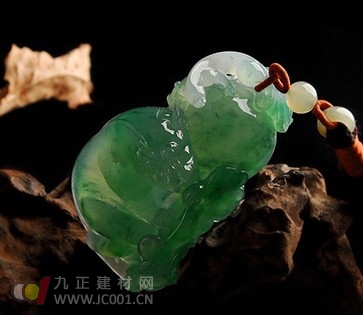For thousands of years, jade has been a symbol of beauty, purity, and spiritual value. In Chinese culture, Aiyu and Tibetan jade have deep historical roots, representing centuries of tradition and craftsmanship. Within this rich jade culture, every piece carries meaning and symbolism, making it more than just a decorative object. As a collector, it's essential to approach jade with an aesthetic eye, appreciating both its form and the story behind it. But how do you assess the color, quality, and value of a jade piece?
Just as a fine horse needs a high-quality saddle, or a master painter requires premium rice paper, the same principle applies to jade carving. A skilled artisan won’t waste high-quality jade on low-standard work. The material is important, but so is the craftsmanship. When you see a well-carved piece, you can tell it was made with care and expertise. This is especially true for beginners in the world of jade collecting, who often rely on the craftsmanship as a key indicator of quality.

Examining the Craft to Identify Quality Jade
High-quality jade is rare, and only a small portion of a large stone may be suitable for use. Newcomers to jade carving usually avoid using premium materials for practice. For those new to jade collecting, one of the easiest ways to evaluate a piece is by looking at the craftsmanship. Learning to recognize good jade takes time and experience, and many beginners may not yet have the skills to distinguish between real and fake. What appears to be a genuine piece might actually be of lower quality. Similarly, the value of a jade piece isn't solely based on the material itself, but also on the skill of the carver who shaped it.
The Value of Jade Lies in Its Origin and Color
Jade of the highest quality typically comes from two main regions: Hetian jade from Xinjiang, China, and Myanmar jade. Hetian jade is known for its white color and is highly sought after for collection. Due to its rarity, it has become increasingly expensive. High-quality jade often has a glassy or icy appearance, appearing more transparent. Among the various colors, green jade is considered the most valuable and prized.
It’s said that a good piece of jade should feel smooth and cool to the touch, even from a distance. If a piece feels dull or lacks transparency, it may not be genuine. Some pieces may have a faint sheen or a layer of light, which can indicate lower quality. White jade, also known as nephrite, gets its name from the fibrous structure of its internal particles, giving it a unique texture and luster.
Whether you're a seasoned collector or just starting out, understanding jade involves more than just looking at the surface. It's about appreciating the history, craftsmanship, and natural beauty that make each piece unique. With time and experience, you'll develop a deeper appreciation for this ancient and beautiful art form.
Regulating valve is a fluid control device, it can control fluid flow, pressure, temperature and other parameters, in order to achieve the purpose of regulating fluid flow characteristics. It is composed of a piston or ball spool, in which there is a manual or electric mechanism with adjustment function, it can control the position of the piston or ball spool, so as to change the pressure and flow rate in the valve, so as to adjust the flow characteristics of the fluid.
The main function of the regulating valve is to adjust the flow rate, pressure and temperature, so that the fluid flow characteristics are more stable, so as to improve the efficiency of the fluid. It can regulate the flow of fluid to keep it at a low level, thus saving energy; The pressure of the fluid can also be adjusted to keep it at a low level, thus reducing noise in the piping system; The temperature of the fluid can also be adjusted to keep it at a low level, thus preventing condensation in the piping system, etc.
Regulating Valve,Pressure Regulator Valve,Double Regulating Valve,Air Regulator Valve
WUXI KVC-VALVE , https://www.wxkaiweixi.com